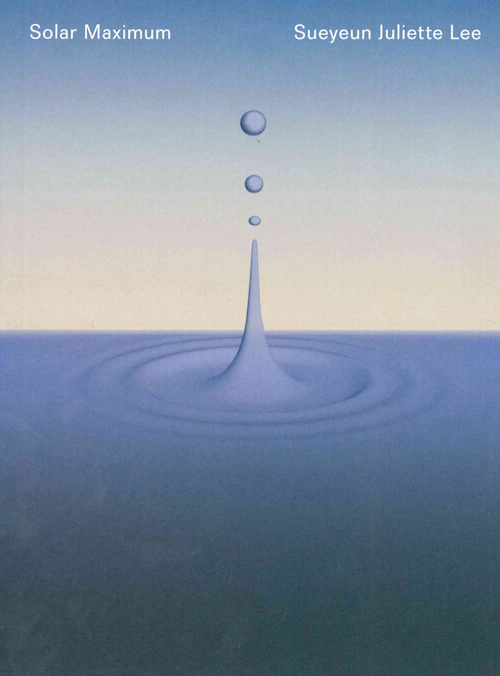Janice Lee Lights Up Sueyeun Juliette Lee's Solar Maximum

Janice Lee reviewed Sueyeun Juliette Lee’s new book, Solar Maximum (Futurepoem, 2015), for Electric Lit! Reminded of Will Alexander's writing, Lee writes that the language "magenetizes, ascends as 'transdimensional movement' and neurological transcendence, here in focus, the distance between bodies and the space and light that hold us." More:
Pierre-Jean Jouve writes that “[p]oetry, especially in its present endeavors, (can) only correspond to attentive thought that is enamored of something unknown, and essentially receptive to becoming.”
The writing in Solar Maximum arrives out of a labored interaction of reading not language, but light, and the world around us, an interaction that acknowledges that memories are motionless, that duration is permeable, and, as Gaston Bachelard writes, “localization in the spaces of our intimacy is more urgent than determination of dates.”
Bachelard also declares, in his seminal book The Poetics of Space, “The poet speaks on the threshold of being.” Lee is this poet.
In the book, Lee writes:
“A feeling is like the natural production of rain, I remind myself. There are causes that result in the downpour, and to trace them is to understand, to take hold of one’s autonomy and ability to decide appropriately one’s reactions. There are cycles and rhythms as well, and often a good night’s rest can dispel the sudden force with which such things appear. I must push through to continue.
This particular feeling is so strictly disembodied that pinpointing its initial causes is hard. A cavalcade of desires — like a bright light behind my eye–threatens to sweep away my sense of stasis. The pull is strong, towards something, but no object sensation in sight. Go, go, go, these feelings say, but not where or towards what. Outside, a dog barks aggressively.”
Indeed, everything is increasingly too much and not enough. Life is a series of breaths: to see a perspective only when the seer and the seen are aligned. How then, are position and perception related? How do the orbit, movement, and alignment of bodies relate to how we see? How do gravitational effects manifest in the spaces between us, create and shrink distance, allow us to see colors, connect bodies and break them? Indeed how does light arrive, yet too, how does language arrive? How is language ultimately given and received?
Read on at Electric Lit.


